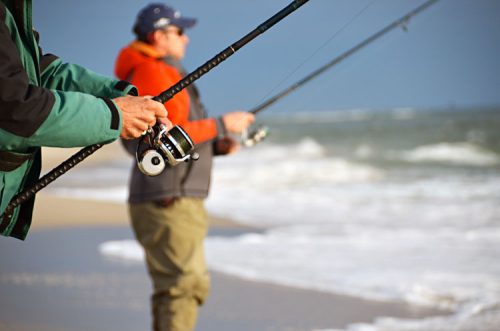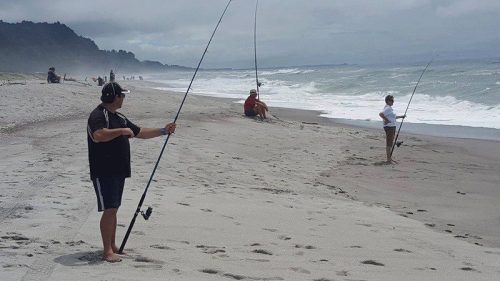



Surfcasting off rocks and beaches has been around for years in New Zealand with some great results from both locations.
With most of our beaches you have to get your bait out past or in the back breakers then have to deal with the crabs taking your bait before the fish strike, or you can rock fish that will get your bait into deeper water to target the big snapper but might lose more gear getting caught on the rocks and seaweed in these locations.
You might like to know some very worthy fish do actually enter the shallow beaches at different times of the year, and it can come as a great surprise that the Big Snapper and many other large and worthy fish frequent the shallowest fringes of our beaches often enough to get caught by surfcasters.
Surfcasting in calm conditions on deep beaches can be enjoyed by anyone who’s able to cast a sinker 20 meters plus, but most surfcasting conditions present greater challenges. For example, challenges such as shallow beaches and steep wave faces.
Yes, the logistics of surfcasting can be infinitely more problematic than those facing rock fishing. But in a way this is what helps to keep fish on our beaches – conditions dictate that not every day is a surfcasting day.
The dedicated surfcaster has a pretty extensive toolkit of skills and techniques to overcome those challenges, aided greatly in recent times by new technology and innovations. To name a few: breakout sinkers, long-casting modern surf rods, ‘clip down’ rigs, and long-cast spool designs. The combination of these advantages allows surfcasting to continue on days which anglers could have only dreamed about 40 years ago.
The organized surfcaster will regular use a number of different baits and lures depending on the location, with a lot of casting and retrieving required.
Some beaches can hold huge numbers of fish and it’s not uncommon for surfcasters to catch 15-25 fish in a session, putting them in the company of decent rock-fishing spots on the productivity scale. Shallower surf beaches are harder work, but are often made up of the softer, fine sands that support shellfish and crustaceans, and therefore some of the finest land-based fish available – big snapper and trevally – are definite possibilities.
Seasons can also play a big part in surf casting, at certain times of the year (spring), fish move closer to the beaches, at other times you need to be casting into the deeper water.
Surfcasting can be one of the cheapest forms of catching a big snapper out there, it just might take you a lot longer on a sandy beach to get the results you are after than rock fishing in set areas.
